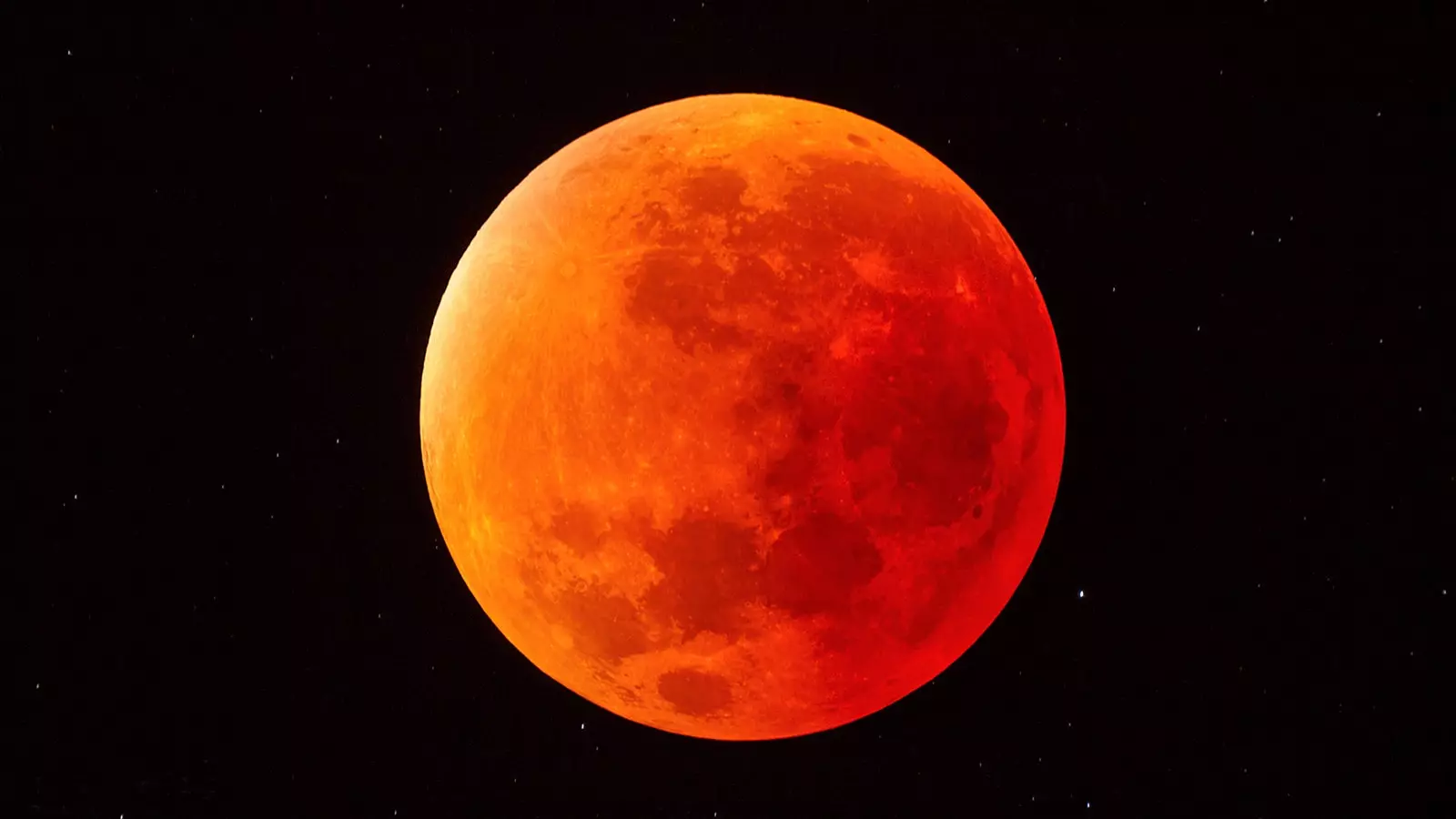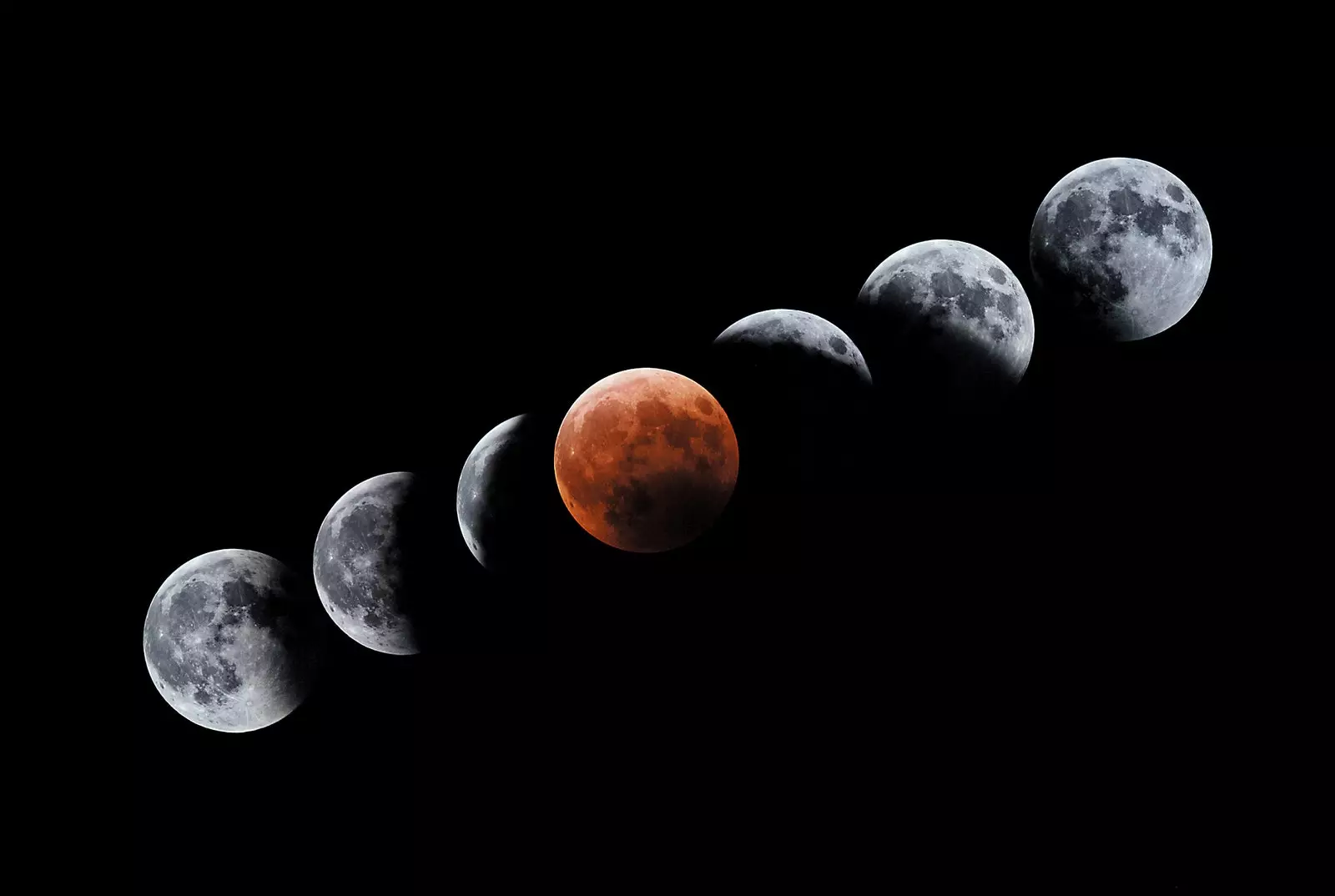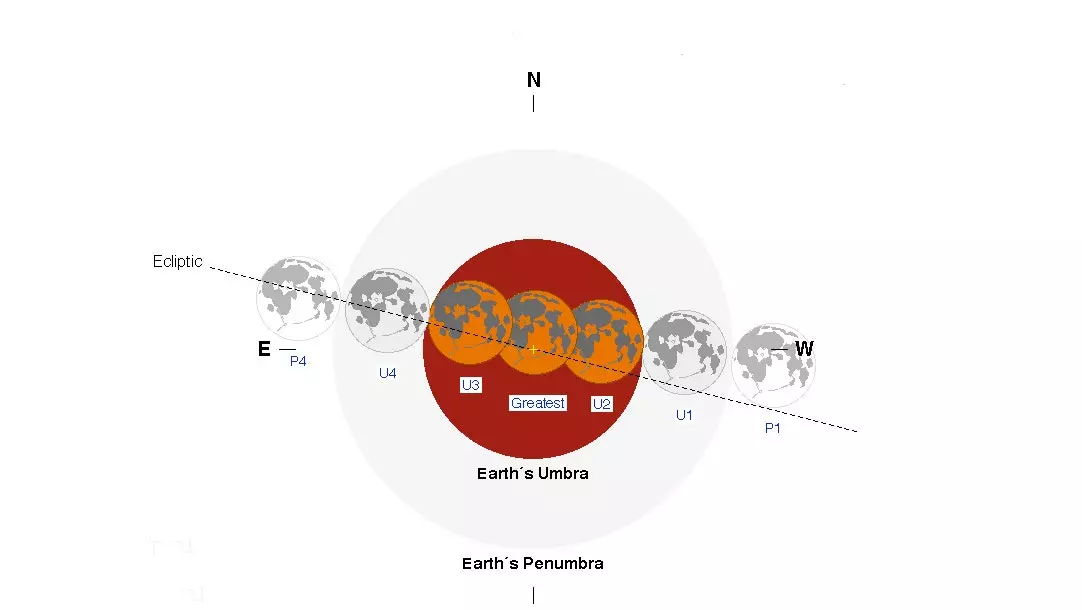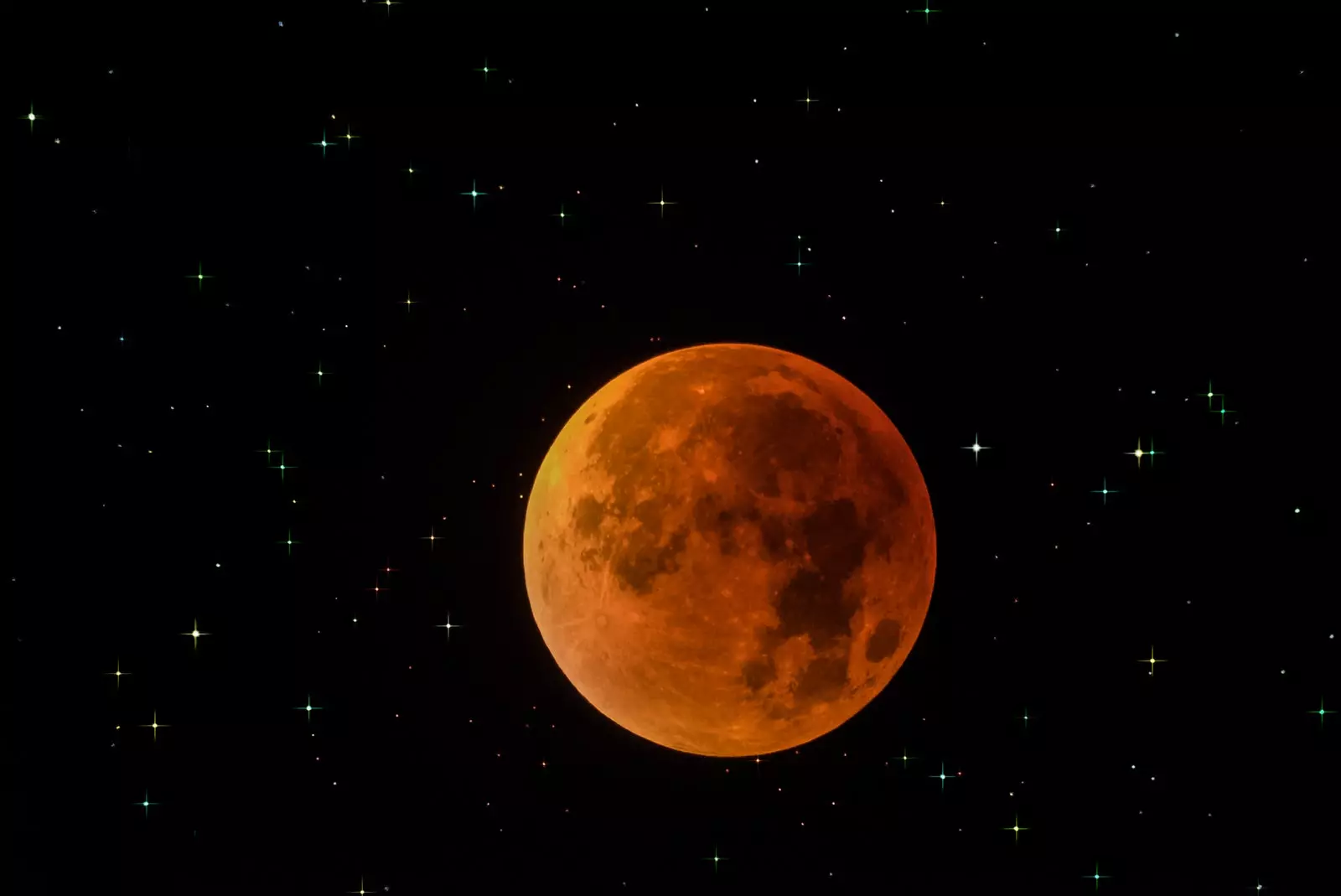
The longest total lunar eclipse of the century arrives
We hadn't seen a total lunar eclipse from Europe in two years and, as if the universe wanted to compensate us, rewards us this Friday with what will be the longest of the 21st century: 102 minutes of totality phase.
"Lunar eclipses occur when our satellite passes through the shadow of the Earth," they explain from the Institute of Astrophysics of the Canary Islands in a statement. And, as they indicate, its spectacular nature is due to the fact that it is something that "It doesn't happen every month, because the Moon's orbit is tilted with respect to the Earth-Sun (ecliptic)".
The maximum of this eclipse will be centered in the Indian Ocean, although These types of phenomena are visible from anywhere in the world, just at the moment when the Moon is above the horizon.

the show is served
This Friday, the Moon will begin to eclipse at 18:24 UT (7:24 p.m. in the Canary Islands and 8:24 p.m. on the peninsula), although the phase of totality, the one whose duration makes it the longest of this century, does not will start until 19.30 UT , ending at 21.13 UT.
“During the entire viewers will see that the Moon does not disappear from view but takes on a reddish hue. The Earth's atmosphere, which extends about 80 km beyond the diameter of our planet, acts as a lens that deflects the Sun's light. At the same time, it effectively filters its blue components and lets through only the red light that will be reflected by the satellite," reads the statement.
The eclipse can be seen in its entirety from East Africa, while in western Europe, we will have to make do with the second part, with the Moon rising on the eastern horizon.
And it is that “Earth casts two shadow zones: the Penumbra, in which the Sun's rays are not completely blocked; and the Umbra, which corresponds to the central zone or shadow cone”, they explain to Traveler.es from the IAC.
“The first part of the eclipse occurs when the Moon enters the Penumbra zone, marked P1 on the diagram. The Moon will advance through the Penumbra until it reaches the edge of the Umbra area and will gradually darken, moment marked as U1”, they describe.

The area that appears in gray is the Penumbra and the part in red is the Umbra
"We from the Canary Islands, and from most of the Peninsula, will not see this first part, since when the Moon rises in the east around 9:00 p.m., it will already be within the Umbra zone (marked as U2 in the diagram), with a characteristic reddish appearance”.
After an hour and a quarter approximately, "the Moon will begin to leave the Umbra zone (U3 in the diagram) passing again to the Penumbra zone (U4) until leaving this zone", they conclude. It will be at that moment when it will recover its normal hue, indicating that the eclipse has ended.
If what the northern sky offers you is not enough, always you can follow the live broadcast that will take place from Namibia through the sky-live.tv channel with the collaboration of the IAC, the European project STARS4ALL and the HESS High Energy Observatory. The broadcast will start on Friday at 18:20 UT (7:20 p.m. in the Canary Islands and 8:20 p.m. on the peninsula).
“In the live broadcast from Namibia, the darkness produced by the eclipse It will allow us to discover objects only visible from the southern skies, such as the Magellanic Clouds” , in the words of Miquel Serra-Ricart, IAC astronomer and person in charge of the retransmission, collected in the statement.

If you miss it, you can always wait until January 2019
Meanwhile, our skies will not be left behind and in addition to the eclipse they have prepared an exhibition for us by Venus, Jupiter, Saturn and Mars.
"This last planet, during totality, will be the brightest celestial object in that area of the sky since it is at the shortest distance from Earth since 2003", they explain to us from the IAC.
To enjoy it, you won't have to make great filigrees, it is enough that "Let's clearly see the eastern horizon, which is where the eclipsed Moon will rise from and will gradually de-eclipse as it makes its celestial journey" , they recommend us. In the event of a cloudy sunset, “the ideal would be to be above the sea of clouds”.
And no, his thing would be for you not to miss it, but if that were the case, nothing to put your hands to your head, because in January 2019 there will be another eclipse. It will not be the longest of the century, but it will be a lunar eclipse.
